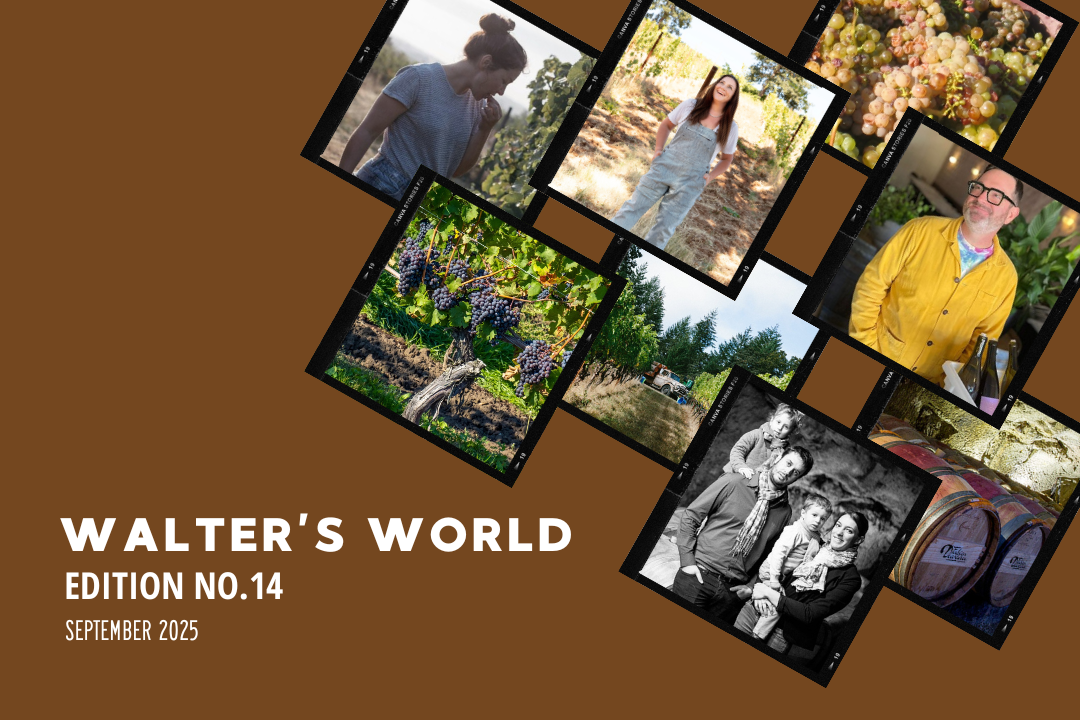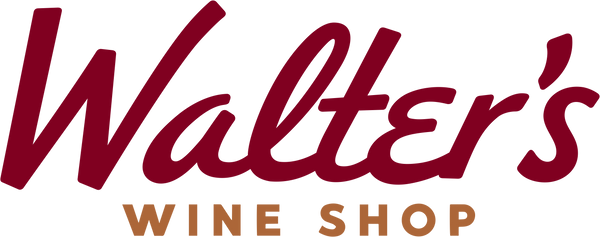Walter's World, Edition No. 14 (September 2025)

So, last month we started approaching the wine club with a theme in mind and it seemed to be well received by many of you… soooooo we’re doing it again this month! Don’t worry, nothing is in a box this time around (though I did hear some stellar reviews of the Grüner which warmed my [Chris] Austrian fanboy heart).
We’re off to the Loire with this release and couldn’t be happier about it. Both Chenin Blanc and Cabernet Franc are on my regular drinking rotation because the expressions vary a lot and they can be an excellent drinking partner to a multitude of foods. Chenin is particularly elusive — it can be full of fall vibes with cooked apples & pears, wax and honey, or it can be a mouthful of rocks (in a good way), citrus curd, and salted fruit. Cabernet Franc plays a part in some of the world’s most famous properties (Château Cheval Blanc anyone?) or can be one of the most simply satisfying wines out there with a humble price tag.
We hope you enjoy this month’s selections as much as we did finding them!
✨ Two-bottle members, let us know if you’d like to snag
the other two bottles for the side-by-side. ✨
Cheers,
Chris + the Walter’s Team
I | Limited Addition Reserve Noble Dry
2022 | Eola-Amity Hills, Willamette Valley, Oregon | Chenin Blanc
We’re starting this month with the two main faces of Chenin Blanc. Before we get to the Ronceray in a minute, let’s talk about botrytis — or “noble rot.” This is the fungus that can transform grapes into the stuff of legends (think Sauternes) by dehydrating them day after day, concentrating sugars and flavors without tipping into full-on gray rot. Left unchecked it’s bad news for your harvest; handled carefully it’s magic.
Since we’re comparing grapes to grapes, we thought it’d be fun to show you a Chenin kissed by botrytis but fermented dry, next to one untouched by it. Noble rot brings saffron, honey, mushroom, and ginger to the table; here it’s just a subtle undercurrent, as only about 20% of the fruit was affected. Otherwise it’s bright and snappy — kumquat, quince, sea spray. I love how the botrytis richness rubs up against the crystalline winemaking approach.
This is a husband-and-wife project. Bree Stock, originally from Australia, is a Master of Wine and educator for the Oregon Wine Board. Her husband Chad is a trained enologist who has worked across the Willamette Valley — Johan Vineyard (which grew the fruit for the Bow & Arrow Cab Franc in this month’s collection) among them.
II | Fabien Duveau Les Bas Poyeux Chacé
2021 | Saumur-Champigny, Loire, France | Cabernet Franc
“I was born on a barrel,” Fabien says with a smirk when you ask how he got into wine. Eighth generation winemaker in Saumur-Champigny — no big deal — inheriting not just Chenin Blanc & Cabernet Franc but also this insane 14th-century cave dug into the local tuffeau soil. Tuffeau is basically boiled chalk… soft, crumbly, holds water, high pH, and somehow makes wines both taut and precise. This wine comes from a site called Poyeux that was made famous 20 years ago by the producer Clos Rougeard. These days, a bottle of Clos Rougeard regularly sells for $250 and suits more of a niche Cabernet Franc drinker, with its “barnyard” funk. I’d argue that Fabien’s is just as good if not better as it doesn’t have any funk. If you like that sort of thing then good on ya, it’s just not for me.
Anyway, he actually makes two bottlings of Poyeux depending on the soil. This one’s the tuffeau with some clay mixed in: tuffeau = energy, clay = power. He gives it just a touch of new oak, enough to highlight that pipe-tobacco-meets-mincemeat thing I love about this wine. It’s basically been dragging me into fall the last couple days as the air gets cooler.
Braised pork shoulder, pommes Anna, broccolini — give me that lineup and I’m refilled, batteries charged.
III | Château de Plaisance Ronceray
2022 | Anjou, Loire, France | Chenin Blanc
This wine is a trip. Jess and I loved it from the first sip and bought a bunch for the club… buuuuut we couldn’t help ourselves and sold more than we meant to, haha. Luckily a bottle of the 2022 landed on my desk after service one night and I opened it with my crab cakes. One glass turned into two, two into three… you get the idea. Bottom line: the 2022 is something special, balancing fruit and savory elements perfectly.
Where Chenin sometimes shows bruised fruit, this one is vibrant — just-ripe quince, peach, nectarine — with a whisper of kombu or dashi (trust me on this).
It comes from the historic hill of Chaume in Anjou, a site famous for producing botrytis. Most wines here are sweet; this one bucks tradition. Instead of embracing noble rot, the estate focuses on the other special aspects of this terroir to make one of the most delicious bone-dry Chenins you’ll taste this year or next.
Because French law reserves “Chaume” for sweet wines, a handful of winemakers here have adopted the name “Ronceray,” after the 11th-century Ronceray Abbey that once ruled over the area (and claimed a quarter of every harvest). Not sure what the nuns paired theirs with, but I’d go rockfish over braised leeks and mushrooms myself.
IV | Bow & Arrow
2023| Willamette Valley, Oregon | Cabernet Franc
In the last 15 years you’ve had this whole migration of sommeliers off the floor and into cellars, which has really shaken up how wines taste. Not just somm magic dust, but a shorter pipeline between the person making the wine and the person drinking it.
Scott Frank is one of those folks. He came from high-end grocery wine programs in Portland, totally obsessed with Loire varieties — Melon from Muscadet, Chenin from Anjou, Cab Franc from Saumur — but living smack in Pinot Noir land. Back in the ’70s Burgundian influence kind of set Willamette’s default. Not a bad thing, but it boxed stuff in for decades. Now the lid’s off and the valley is humming with cool projects outside Pinot.
While working at Cameron Winery (also on our shelves!) Scott got offered a couple tons of Cab Franc from Johan Vineyards, which is basically biodynamic wizardry in the Van Duzer Corridor AVA. That AVA sits in this break in the Coast Range where cold Pacific air blasts in every afternoon, shrinking berries, thickening skins, ramping up flavor and phenolics. In other words: complexity factory.
Scott riffs off Chinon — neutral, larger barrels instead of oaky vanilla bombs — so the wine stays true to itself: dark raspberry, cherry, Provencal herbs, and that sanguine, iron-tinged finish that Cab Franc nerds love. Food? Grilled salmon and eggplant? Green curry with goat? Steak frites? Yes, yes, and yes please.
